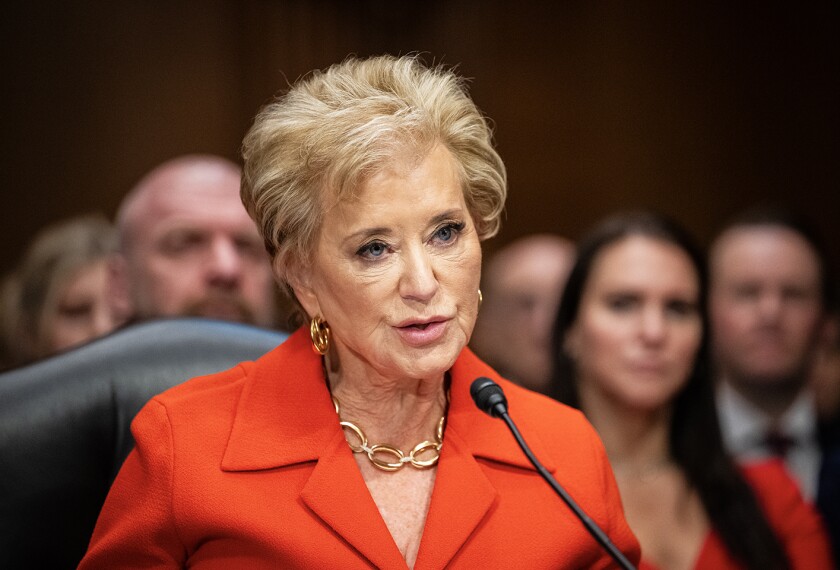Reversing a downward trend, high school graduation rates in most Southern states have climbed this decade, with Tennessee leading the pack in growth, according to a new report by the Southern Regional Education Board.
At the same time, more than one in four 9th graders in the region still are not graduating on time, and the recent gains only bring the South close to the same level it saw in the early 1990s, says the SREB, an Atlanta-based compact of 16 states.
“Perhaps for the first time, Southern states overall are within reach of the national average graduation rate,” writes David S. Spence, the president of the SREB, in an introduction to the report, issued last week.
The SREB released a companion report with strategies to help states raise high school achievement levels and graduation rates. Among the suggestions are to set more-ambitious targets for improving graduation rates, give equal weight to graduation and achievement in gauging school performance, and strengthen supports for students’ transition from middle to high school.
The improved results for the 16-state SREB region, which stretches from Texas to Delaware, contrast with an SREB report from 2005. That study concluded that graduation rates in many Southern states were low and slipping. (“Studies Decry Faulty Graduation Data, Rising Dropout Rates,” July 13, 2005.)
Steady Improvement
The new study, “Gaining Ground on High School Graduation Rates in SREB States: Milestones and Guideposts,” examines several measures, including the “averaged freshman graduation rate,” or AFGR, which reflects the proportion of 9th graders who graduate in four years. That method, the report notes, is now used by the National Center for Education Statistics, an arm of the U.S. Department of Education.
The median graduation rate under that measure for the SREB states was 72 percent in 2006, up from 66 percent in 2000, the report says. By comparison, the national average in 2006 was 73 percent, up from 72 percent in 2000.
(The report calculates the SREB median by averaging the graduation rates for the two states falling in the middle of the results.)
At the same time, the median graduation rates for black and Hispanic students in 2006 were 63 percent and 66 percent, respectively, for the SREB states, both above the national average, using the AFGR. Nationally, the 2006 rates were 59 percent for black students and 61 percent for Hispanic students.
However, the SREB graduation rate for Hispanics in 2006 was the same as the national average when using a different method, known as the Cumulative Promotion Index, the report says. (That method, which estimates the probability that a 9th grader will complete high school on time with a regular diploma, is used in Diplomas Count, an annual report published by Education Week.)
Tennessee saw the most growth of any Southern state in its graduation rate, based on the AFGR, rising to 71 percent in 2006 from 60 percent in 2000. Among the report’s other highlights, also based on the AFGR method:
• Arkansas and Maryland had the highest graduation rates among SREB states in 2006, at 80 percent.
• Louisiana and South Carolina had the lowest rates, at 60 percent and 61 percent, respectively.
• Kentucky and Delaware saw their graduation rates climb by 7 percentage points from 2000 to 2006, with rates of 77 percent and 76 percent, respectively, in 2006.
• Louisiana, Virginia, and Texas saw declines from 2000 to 2006, with the sharpest drop, 5 percentage points, in Louisiana. (At the beginning of the 2005-06 academic year, however, Hurricane Katrina struck the Gulf Coast, displacing thousands of students.)
In discussing the results for Tennessee, the SREB points to some recent efforts in the state, such as a program that recruits adult mentors and academic coaches to help students as theymove from 8th to 9th grade. Another is a 2001 law that requires students ages 15 to 18 to meet attendance requirements and make “satisfactory academic progress” or have their driving privileges suspended until they return to school or improve their grades.
Connie J. Smith, an assistant commissioner for the Tennessee Department of Education, said the recent growth is due to “no one variable—it’s a combination of things.”
“It’s an intentional look at keeping kids in school,” she said, “and it’s been statewide and systemic.”The report also touches on a recent analysis by Johns Hopkins University researcher Robert Balfanz, who identified the number of schools classified as “dropout factories” in each state. Half of South Carolina’s nearly 100 high schools, for example, were in that category, as were 39 percent of Florida’s in 2007. Mr. Balfanz defines a dropout factory as a high school in which 60 percent of 9th graders or fewer make it to their senior year on time.






